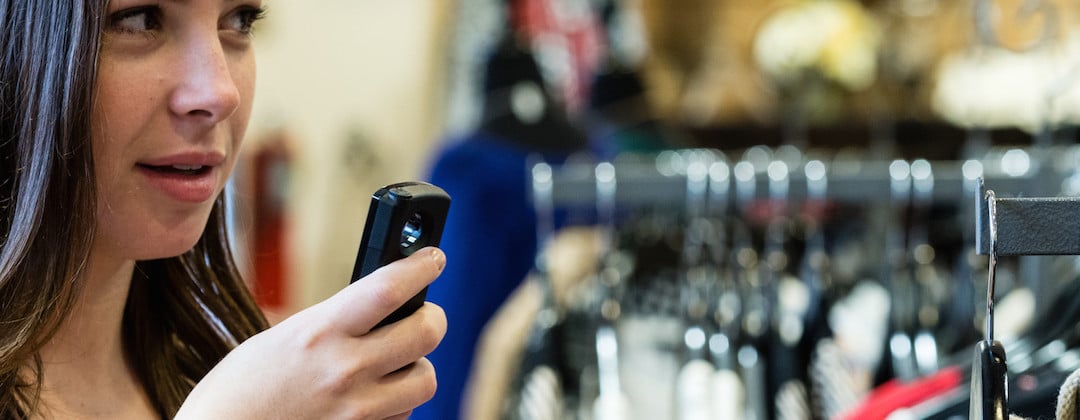

Our business has received hundreds of two-way radio service calls over the years. While it is often necessary to consult a two-way radio service provider to resolve these issues, there are many problems that can be solved just by taking steps to diagnose and troubleshoot. And there are many maintenance routines that prevent these issues from occurring in the first place.
On this page, we describe the most common problems that users face with two-way radios and the steps you can take to troubleshoot and prevent them.
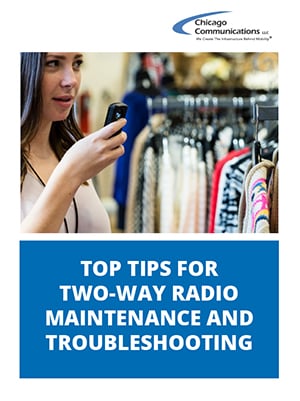
Inconsistent and poor sound quality across multiple units within the same area may be a sign that the system is contributing to the problem. In this case, make sure to contact your two-way radio service provider to have the issue diagnosed and addressed.
If multiple handsets are on a channel and only one radio experiences poor quality, it is likely to be that specific unit rather than the entire system. In that case, start by checking the following:
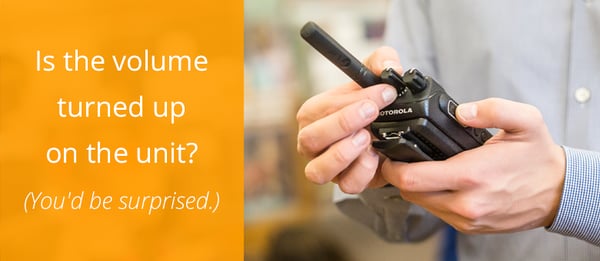
For reference purposes, the detailed steps below refer to the parts, features, and functions of the Motorola CP200d and XPR3500 portable radio. For helpful visuals and more details, please refer to the step-by-step video below.
Radios can malfunction if the antenna is loose, if it's the wrong type, or if it's installed incorrectly.
Start by removing the antenna by turning it counterclockwise. Ensure you have the correct antenna type for your radio — either the standard whip antenna, which is long and thin, or the stubby antenna, which is significantly shorter. The antenna will have either a pin or a flat connector. Look at the connector base on the radio and ensure it's the correct shape to fit the connector, pin, or flat. Also, look at the antenna and see whether it has "UHF" or "VHF printed on it. Look at the model number on the radio label and check the documentation for that radio to determine whether it should be used on the UHF or VHF frequency band. Ensure you have the appropriate type of antenna for that frequency band. If you appear to have the correct type of antenna, reinstall it by turning it in a clockwise direction and turning the radio back on.
Replacing the batteries in your two-way radio often solves the problem. These batteries typically last between 18 and 24 months, depending on usage levels. You can check the manufacturer's date of your battery by first removing it from the radio and inspecting the four-digit number located on the back of the battery, next to the barcode. The first two numbers indicate the year, and the second two numbers indicate the week. If the batter is over 24 months old, replace it.
If your radio has a display screen, you can check its battery life as indicated in the top left corner of the screen. If there's no display, when turning on the radio, you can listen for a double beep being emitted from the radio. This is the indicator of a low battery.
You can also check the LED light indicator on the radio's charger. If your radio doesn't seem to be turning on, place it securely in the charger, ensuring the battery contacts align with the charger's contacts. Examine the LED light and note the colors displayed and their pattern. Check this against the documentation provided with your radio to determine the issue; the video above includes the indicator light chart for the Motorola CP200d and XPR3500. For example, if the light flashes between red and green, the battery's reaching the end of its life.
It can be helpful to try a battery swap: take a battery from a functioning radio of the same type and insert it into the malfunctioning radio. If this resolves the issue, you likely need a new battery.
If you have a bank of emergency radios, check their batteries monthly to ensure they're charged and the radios are functioning properly.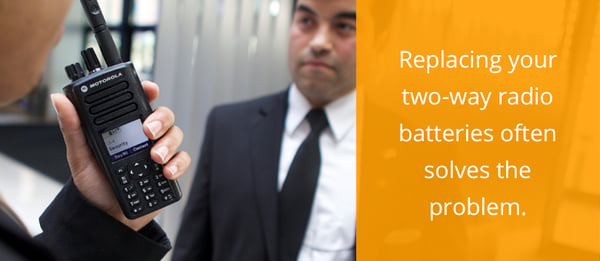
Two-way Motorola radio accessories are a great way for radio users to engage in discrete communication, especially in noisy environments. If accessories such as remote speaker mics or two-way surveillance kits are not working properly, first try powering off the radio. Remove the accessory, resecure it, and turn on the radio. (Always follow these steps when attaching the accessory.) Does the radio register the accessory on its display when it's attached?
Try turning off the radio, removing the accessory, and cleaning the contacts on the radio with a pencil eraser to take off any residue. After cleaning, with the radio still off, reattach the accessory and turn the radio back on. If this doesn't fix the problem, try turning off the radio and swapping in a new accessory — if that one registers, then it's most likely the accessory itself that's malfunctioning.
Sometimes users face problems with two-way radios that are caused not by the device, but by how it's being used — or misused.
Using radios correctly will solve a whole host of problems. Radios are meant to be intuitive, but they do require training, not just once but on an ongoing basis.
Pass along these radio best practices and see how many radio “problems” disappear:
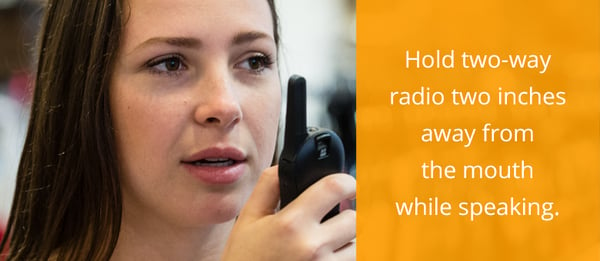
Proper maintenance and storage can reduce the chances of damage to two-way radios, making them last as long as possible. Daily maintenance of the handset as well as good battery practices can also indirectly help with sound quality.
With these tips for two-way radio maintenance, your communication will continue seamlessly for the estimated five to seven years that your radios are expected to last.
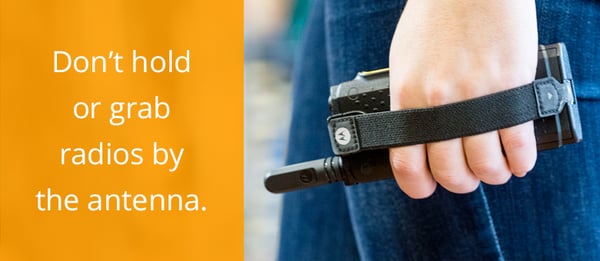
If you’ve tried the troubleshooting steps above, and you’re sure your team is using their radios correctly, it’s time to make the call.
While technology is changing, two-way radio service providers like Chicago Communications are equipped with the latest in technology to meet whatever challenge is thrown at us.
From basic analog radio systems to the most advanced P25 Public Safety systems, we monitor and respond to service outages. We also consult on equipment with our contracts department to see whether it makes sense to put equipment on a contract or actively seek replacement because of age or parts issues.
Contact Chicago Communications to request two-way radio service for your facility.
